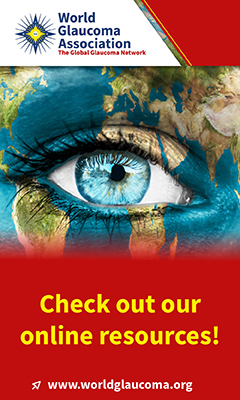advertisement

Editors Selection IGR 16-4
Prognostic factors: Does PPA atrophy indicate Glaucoma progression?

Comment by Gustavo de Moraes on:
116870 Peripapillary Atrophy Area as an Indicator of Glaucomatous Structural and Functional Progression, Khreish M; Schuman JS; Lee T et al., Translational vision science & technology, 2024; 13: 1
This study investigated the relationship between peripapillary atrophy (PPA) area, measured with optical coherence tomography (OCT), and structural and functional progression in glaucoma. The study included 71 eyes from 50 subjects with open-angle glaucoma, with a mean follow-up duration of 4.4 years. The researchers found that longitudinal changes in PPA area were significantly associated with changes in visual field parameters (mean deviation and visual field index) and structural parameters (ganglion cell inner plexiform layer thickness), indicating that PPA area can be a useful indicator of glaucoma progression.
PPA area can be a useful indicator of glaucoma progression
A positive aspect of the study is its prospective, longitudinal design, which allowed the researchers to track changes in PPA area and other parameters over time. Many of previous studies were retrospective or just compared changes between two distinct time points. This provides stronger evidence for the relationship between PPA area and glaucoma progression than previous studies. Additionally, the authors should be commended for their innovative methodology in measuring PPA with OCT. The utilization of OCT for PPA quantification is a significant step forward, particularly by combining en face images and b-scans, offering greater precision and reproducibility compared to traditional stereophotography. The high reproducibility achieved in this study underscores the reliability of the method and its potential for future clinical applications.
However, the study also has some limitations. It is unclear what proportion of the sample actually had any PPA, as well as how they treated this group statistically. It would be important to show whether there was a significant association between presence of PPA (yes vs. no) and progression, as done in previous studies. In addition, it would be worth testing for relationship between age (and aging) and PPA changes. This is important because one alternative interpretation of the results is that PPA and progression have no cause-consequence relationship, but they could be completely independent in terms of biological effects but are simply correlated with the normal aging of the eye.
Notwithstanding, this study provides higher level evidence for the relationship between baseline PPA, PPA changes, and glaucoma progression (on OCT and visual fields) which are invaluable for clinical management.
Comments
The comment section on the IGR website is restricted to WGA#One members only. Please log-in through your WGA#One account to continue.Log-in through WGA#One

